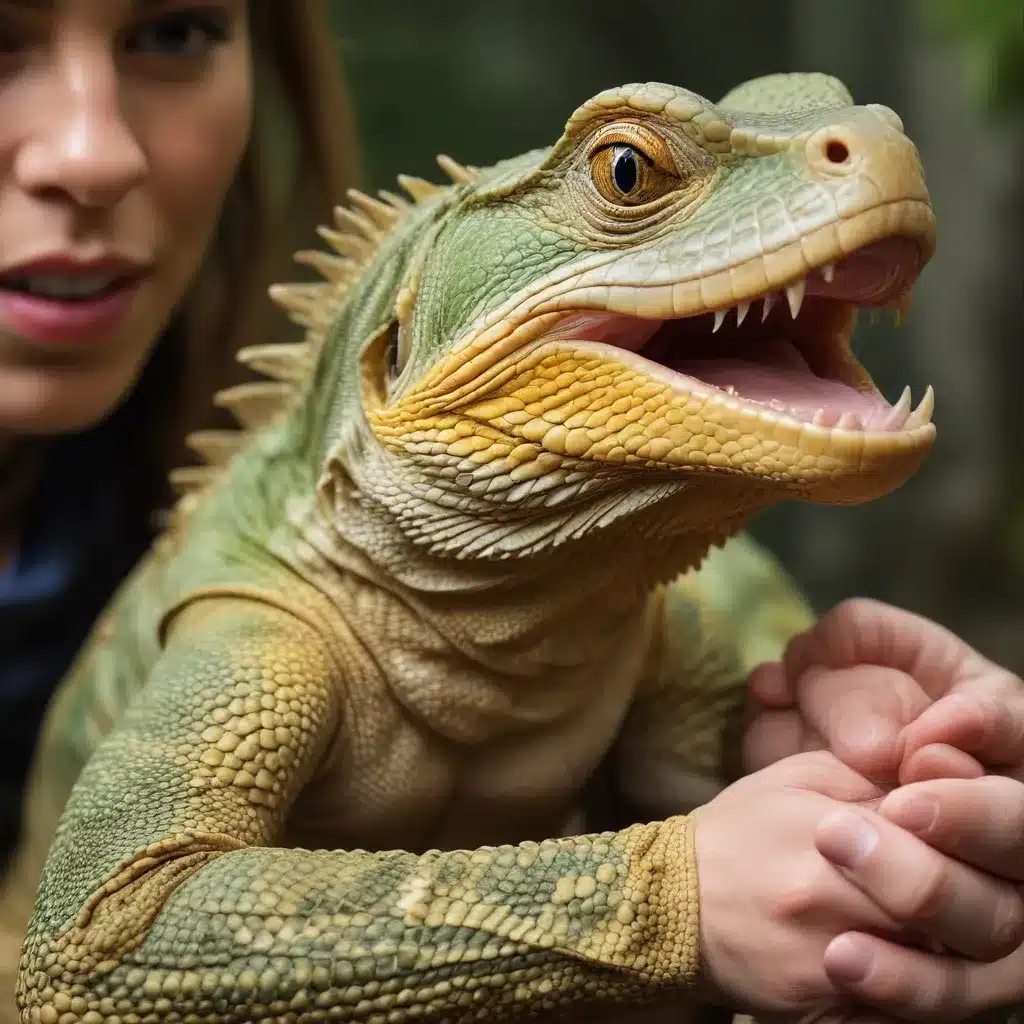
Establishing a Safe and Healthy Rapport with Reptiles
Handling reptiles, whether for care, breeding, or sale, requires a delicate balance of confidence, caution, and compassion. These fascinating creatures possess unique behaviors and temperaments that must be understood and respected to ensure the safety of both the reptile and the handler. In this comprehensive guide, we will explore the best practices for safe reptile handling, enabling you to build strong relationships with your scaly companions while prioritizing their well-being and your own.
Understanding Reptile Behavior and Temperament
Reptiles, like all animals, exhibit a range of behavioral patterns and temperaments that can vary significantly between species, individual animals, and even within the same species. It is crucial to research and familiarize yourself with the specific behaviors and tendencies of the reptile species you are working with. Some reptiles may be more docile and tolerant of human interaction, while others may be more skittish or defensive. Recognizing these behavioral cues can help you anticipate and respond appropriately to the reptile’s needs, fostering a trusting and positive relationship.
Proper Handling Techniques
Effective and safe reptile handling starts with understanding the appropriate techniques for each species. Always ensure that you are thoroughly trained and experienced in handling the specific reptile you are working with. Improper handling can lead to stress, injury, or even aggressive behavior in the animal. When handling reptiles, follow these general guidelines:
-
Approach Calmly: Move slowly and deliberately when approaching the reptile’s enclosure. Sudden movements or loud noises can startle the animal and provoke a defensive response.
-
Support the Entire Body: When picking up a reptile, support its entire body, including the head, neck, and tail. Avoid grabbing or restraining the animal by the head or tail alone, as this can cause injury.
-
Maintain Control: Keep a firm but gentle grip on the reptile, ensuring that it feels secure and cannot slip away. Avoid squeezing or applying too much pressure, as this can cause distress or harm.
-
Minimize Stress: Limit the amount of time the reptile is handled, and return it to its enclosure as soon as possible. Prolonged handling can be stressful for the animal.
-
Prioritize Safety: Always exercise caution when handling venomous or large reptile species. Seek professional guidance and use appropriate safety equipment, such as thick gloves or tongs, when necessary.
Recognizing and Responding to Stress Signals
Reptiles can exhibit a range of stress signals that indicate they are uncomfortable or feeling threatened. These may include hissing, gaping the mouth, coiling the body, or attempting to flee. If you observe these behaviors, immediately return the reptile to its enclosure and take steps to address the source of stress.
Providing a calm, quiet, and secure environment is crucial for maintaining the reptile’s well-being. Ensure that the animal’s habitat is properly set up, with appropriate temperature, humidity, and hiding spots. Gradual acclimation and positive reinforcement can also help build trust and reduce stress during handling.
Responsible Reptile Breeding Practices
Breeding exotic reptiles is a complex and rewarding endeavor, but it must be undertaken with the utmost care and consideration for the animals’ welfare. Responsible breeders prioritize the health and well-being of their reptiles, employing ethical and sustainable breeding techniques.
Selecting Appropriate Breeding Pairs
Careful selection of breeding pairs is essential for producing healthy offspring and maintaining genetic diversity within the captive population. Factors to consider include the animals’ genetic background, physical conformation, and overall health. Avoid breeding closely related individuals or those with known genetic defects or health issues.
Optimizing Breeding Conditions
Providing the right environmental conditions is critical for successful reptile breeding. Replicate the natural habitat of the species, ensuring appropriate temperature, humidity, lighting, and substrate. Offer adequate space, hiding spots, and enrichment to reduce stress and encourage natural breeding behaviors.
Monitoring and Caring for Gravid Females
Closely monitor female reptiles during the breeding and egg-laying process. Provide additional nutritional support, maintain optimal environmental conditions, and be prepared to assist with egg-laying if necessary. Carefully incubate the eggs, maintaining precise temperature and humidity levels to promote successful hatchling development.
Rearing and Socializing Hatchlings
Proper care and socialization of hatchling reptiles are essential for their long-term well-being. Offer appropriate housing, feeding, and veterinary care to ensure a strong start in life. Gradual exposure to human interaction can help foster calm and confident reptiles, making them better suited for responsible ownership or sale.
Legal Considerations for Exotic Reptile Trade
The sale and ownership of exotic reptiles are subject to a complex web of legal regulations and requirements that must be strictly adhered to. Familiarize yourself with the applicable laws and guidelines in your region to ensure compliance and avoid potential legal pitfalls.
Licensing and Permits
Depending on your location, you may be required to obtain specific licenses or permits to breed, sell, or own certain reptile species. Research the local and national regulations governing the trade and possession of exotic reptiles. Ensure that you have the necessary documentation and follow all reporting and record-keeping requirements.
Responsible Sourcing and Documentation
When acquiring reptiles for breeding or sale, thoroughly vet the source to ensure that the animals were obtained and transported legally. Maintain meticulous records, including species identification, origin, and any relevant health or genetic information. This documentation can be crucial in demonstrating compliance with applicable laws.
Ethical and Sustainable Practices
Prioritize the welfare of the reptiles in your care and promote sustainable practices within the exotic reptile trade. Avoid participating in activities that exploit or mistreat animals, such as wild-caught specimens or puppy mill-like breeding operations. Educate potential buyers on proper reptile care and responsible ownership to ensure the long-term well-being of the animals.
By following these guidelines for safe handling, responsible breeding, and legal compliance, you can contribute to the thriving and sustainable exotic reptile community while fostering a deep appreciation for these remarkable creatures. For more information and resources, please visit exoticreptilesforsale.com.

